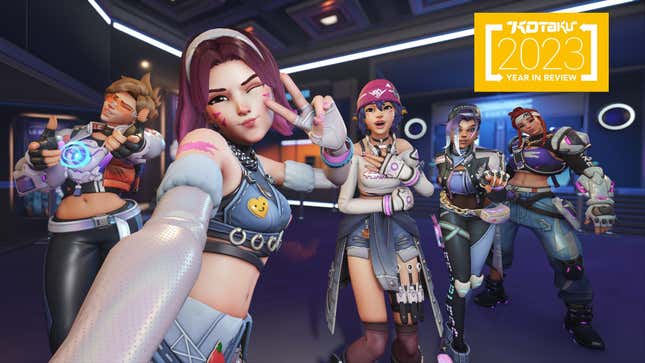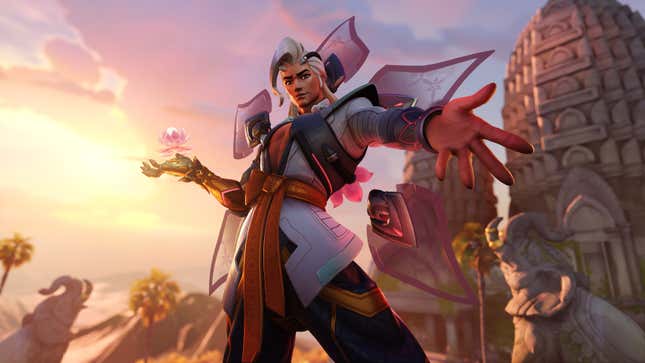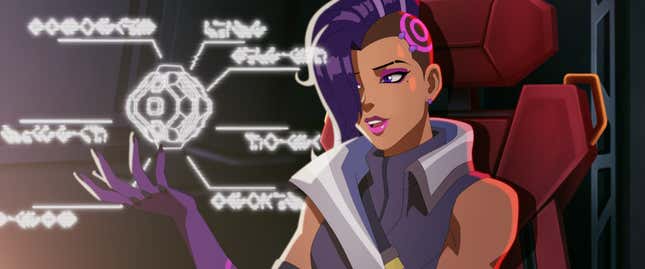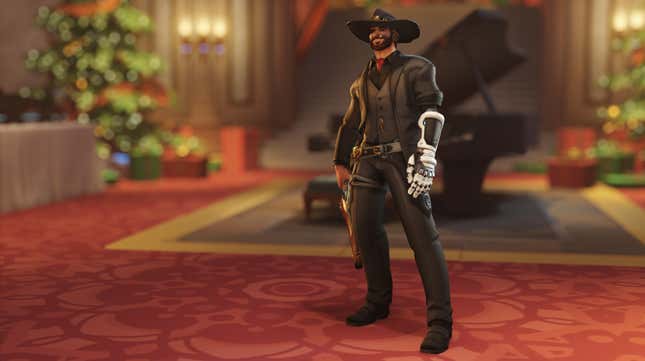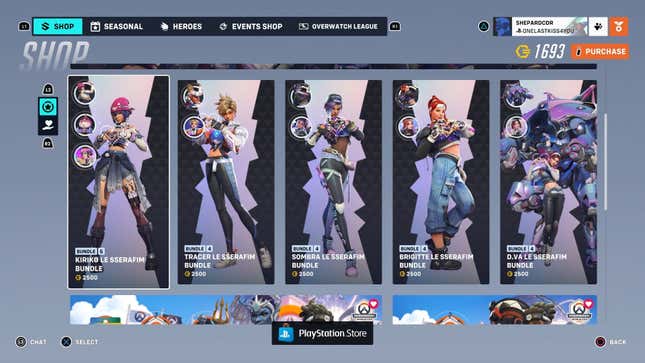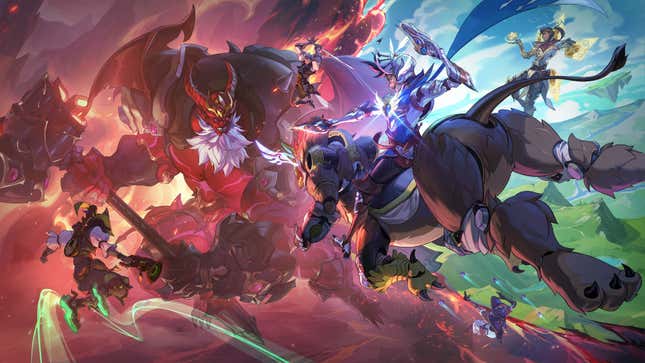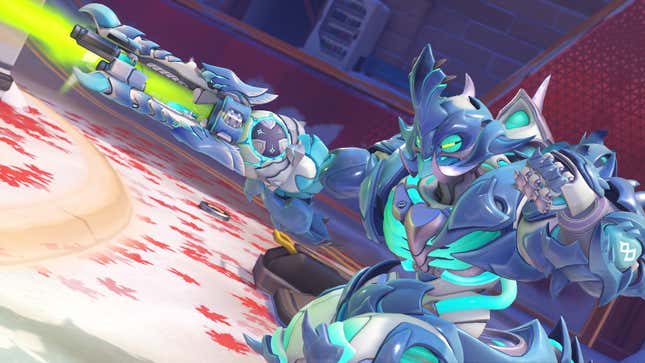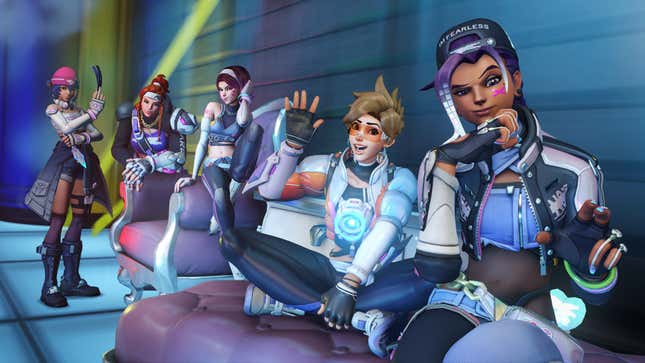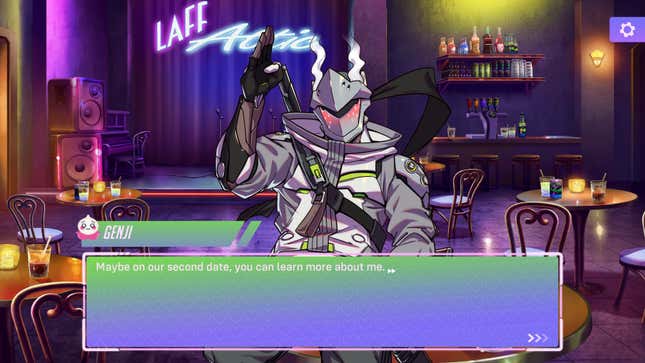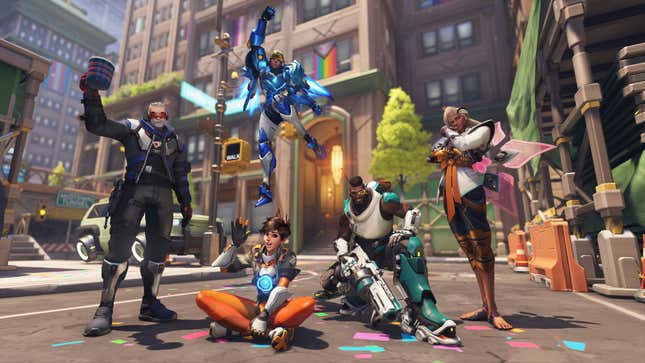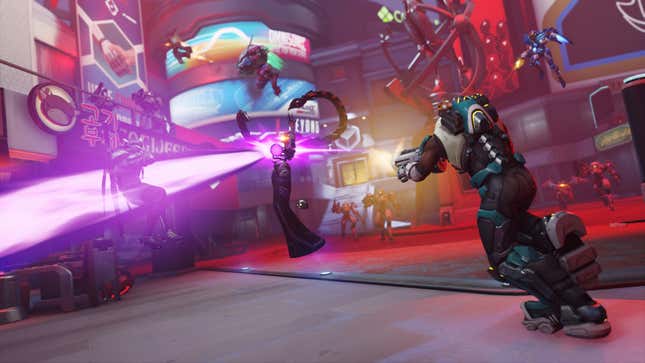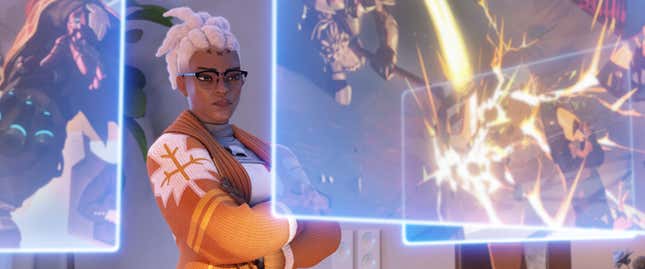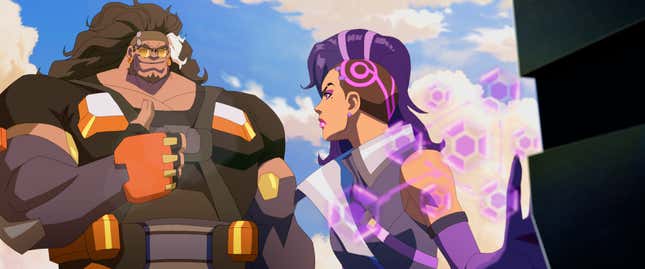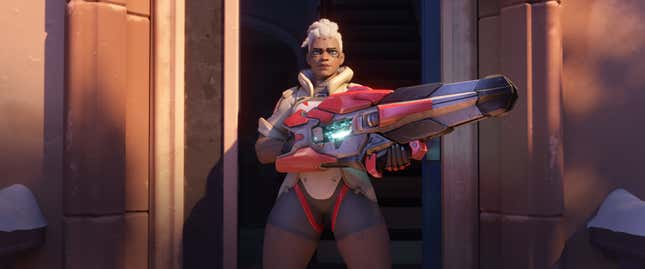In 2023, Blizzard opened up Overwatch’s world for third-party collaborations. The first was a set of skins and other cosmetics based on the anime/manga One-Punch Man, which naturally turned Overwatch’s own “one-punch man,” Doomfist, into the titular hero with a new skin. The cape is luxurious, but he’s not the only hero who got to cosplay during the event. Soldier: 76 gets to ride a bike as Mumen Rider, Kiriko’s green wig is wigging as the Terrible Tornado, and Overwatch’s resident cyborg Genji naturally becomes One-Punch Man’s cyborg Genos.
Looking back, the collaboration was strange because One Punch Man hasn’t really been doing much as of late, with the third season still in development and the last one having come out in 2019. But there’s a surprising amount of love shown in the skins, highlight intros, and other cosmetics, as silly as it is seeing Soldier: 76 pedaling like his life depends on it.
The second big collaboration was with K-Pop girl group Le Sserafim, and it was an absolute banger of an event. Take my hand, walk with me. Have you heard the good word of Le Sserafim’s catchy as hell bop “Perfect Night”? Have you basked in the glory of Tracer, Kiriko, Brigitte, D.Va, and Sombra geared up for a K-Pop concert, serving some of the most glamorous skins Overwatch has ever seen? And did you watch the music video, in which all the previously mentioned girlies attend a Le Sserafim concert and use their various abilities to have their own perfect night? It ruled. I’m still wearing the Sombra skin when I play her, and have no plans to take it off.
Le Sserafim / Blizzard Entertainment
While Blizzard looked outside of its stable for crossovers, it also looked to the other side of the office and had a Diablo crossover, as well. Moira mains rejoiced as she finally got a decent skin out of the arrangement, though the Diablo-themed co-op mode was extremely mid and tiresome. Also, John Cena showed up in a viral marketing campaign for some reason, though that had no impact on the game itself.
Even if you don’t watch One-Punch Man or jive with Le Sserafim’s music, Overwatch 2’s collaborative events have felt meaningful, not like they’re just cheap crossovers. The team at Blizzard has done a lot to capture the vibes of its partners without it coming at the expense of its own identity. Crossovers can be exhausting, as games like Fortnite can lose their entire sense of self as they clutter their worlds with pieces of other properties. But so far, Overwatch 2 has found a happy medium in paying tribute to something within its own framework. — KS
